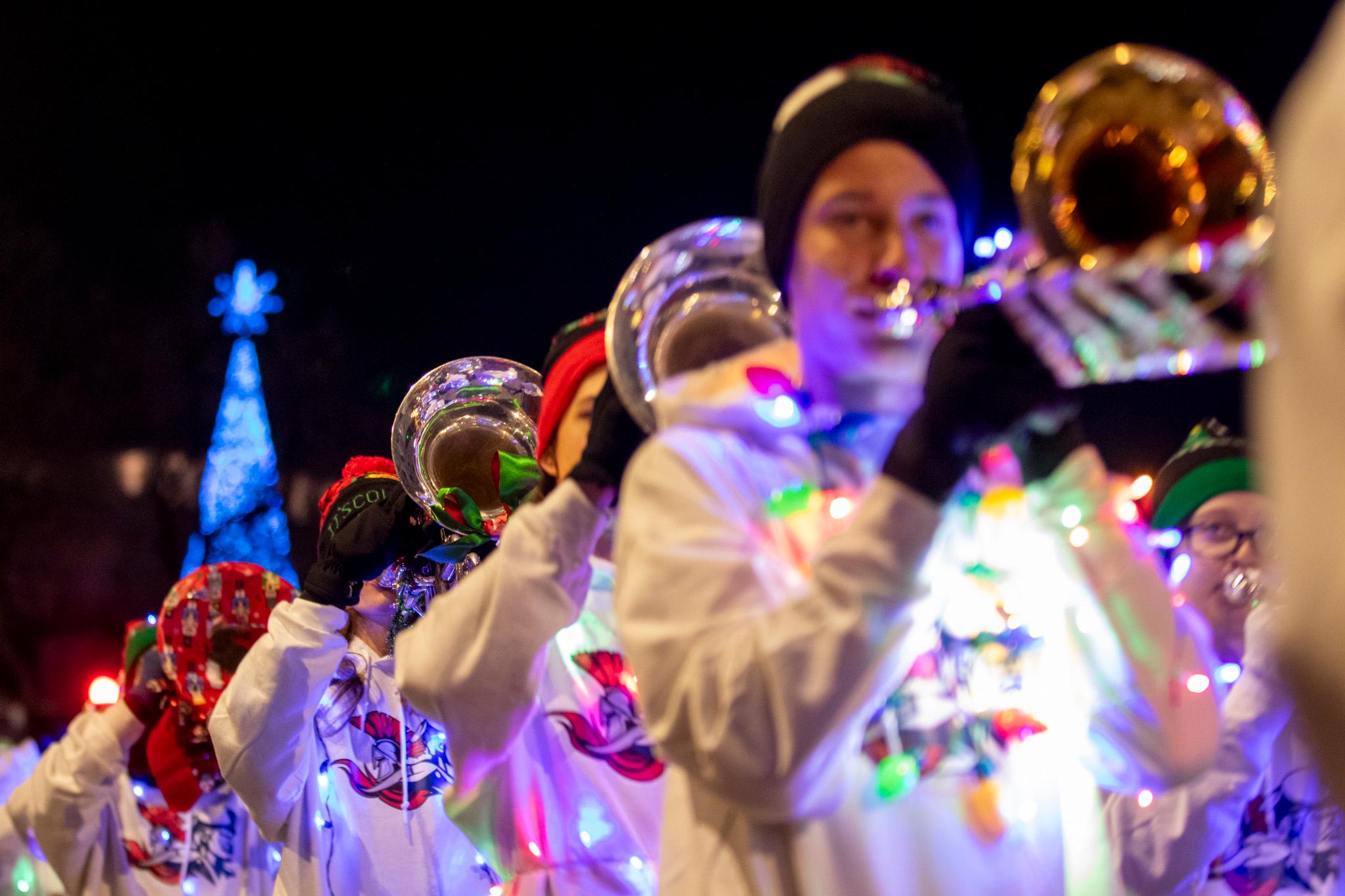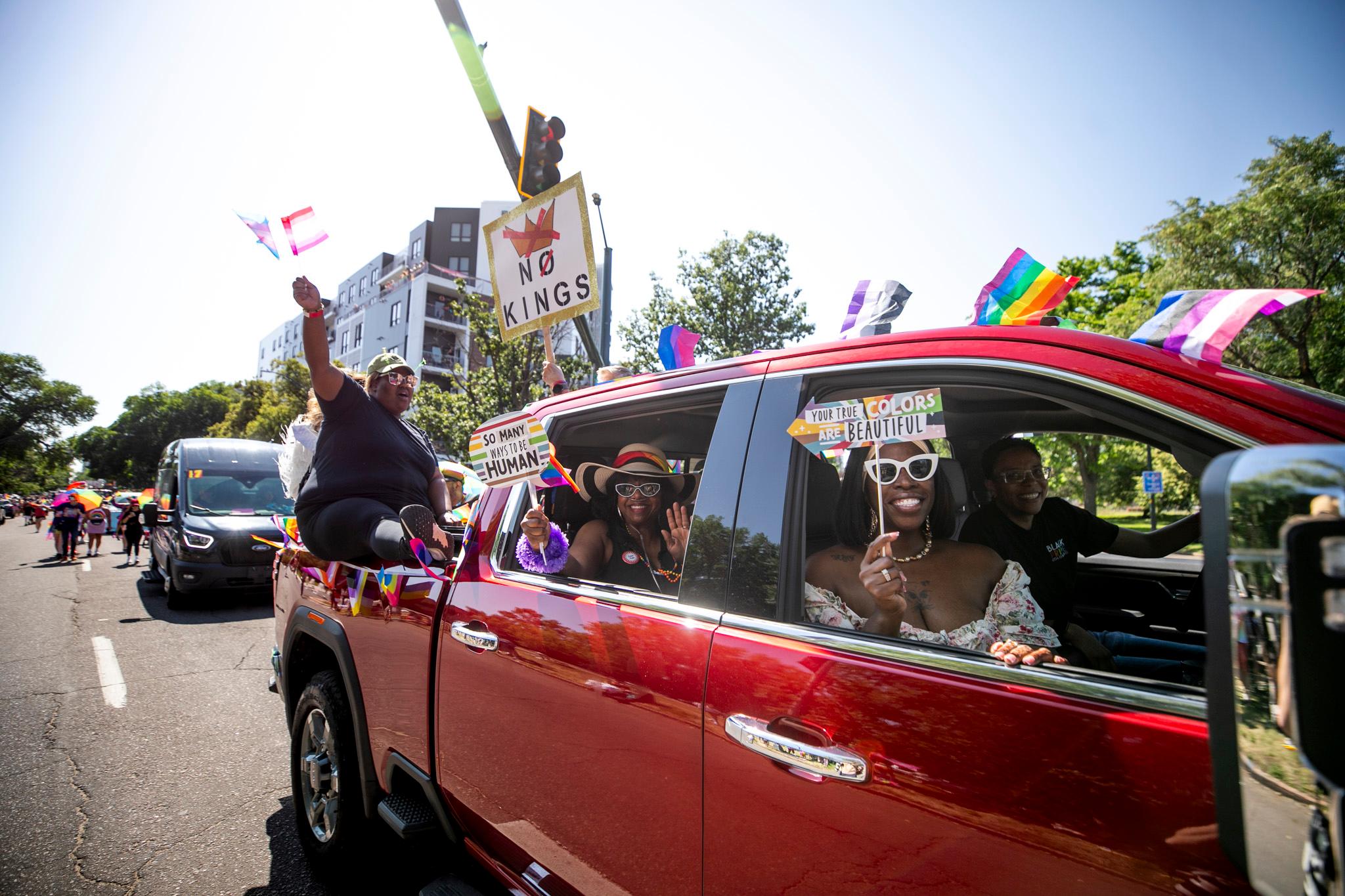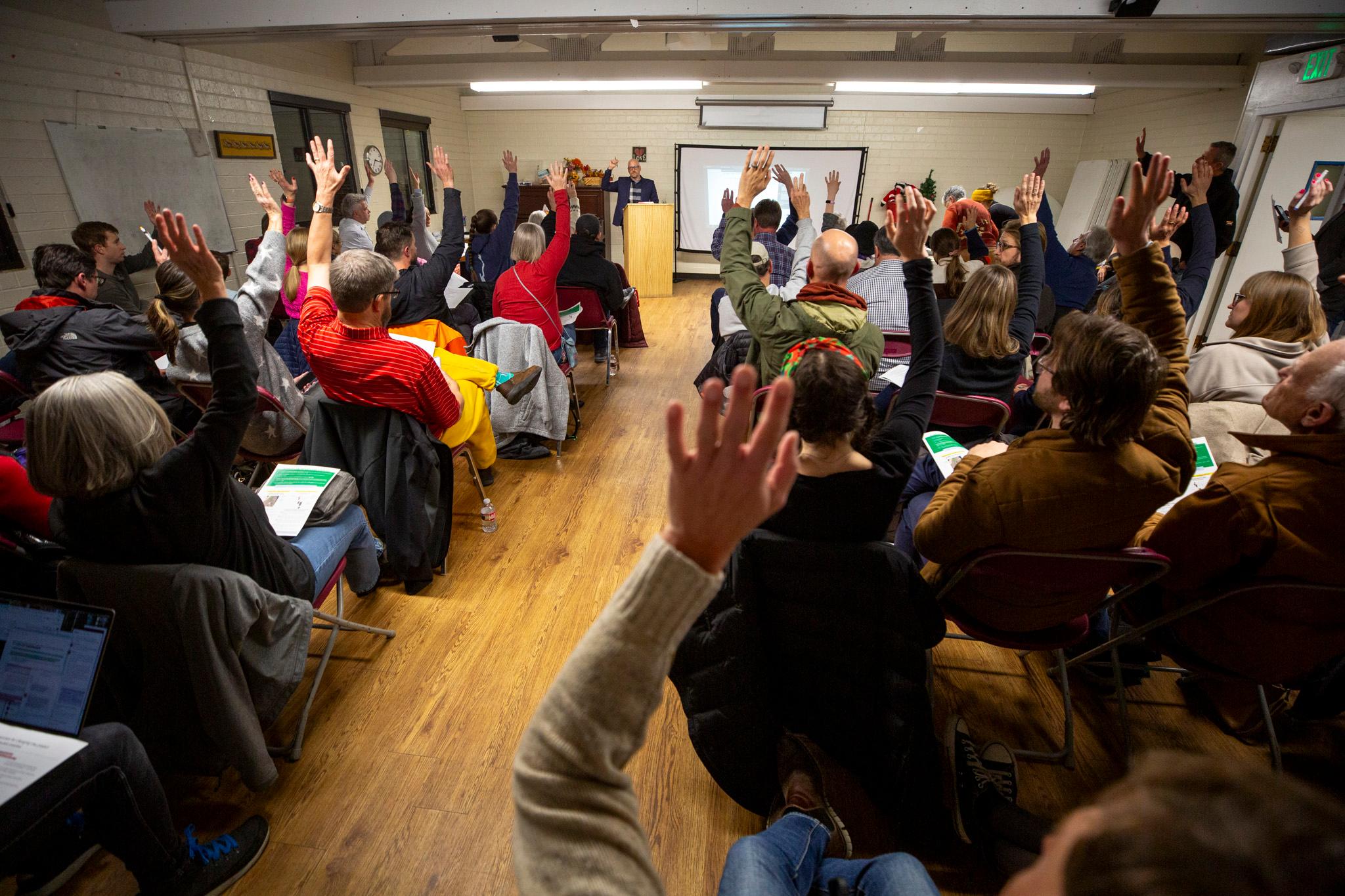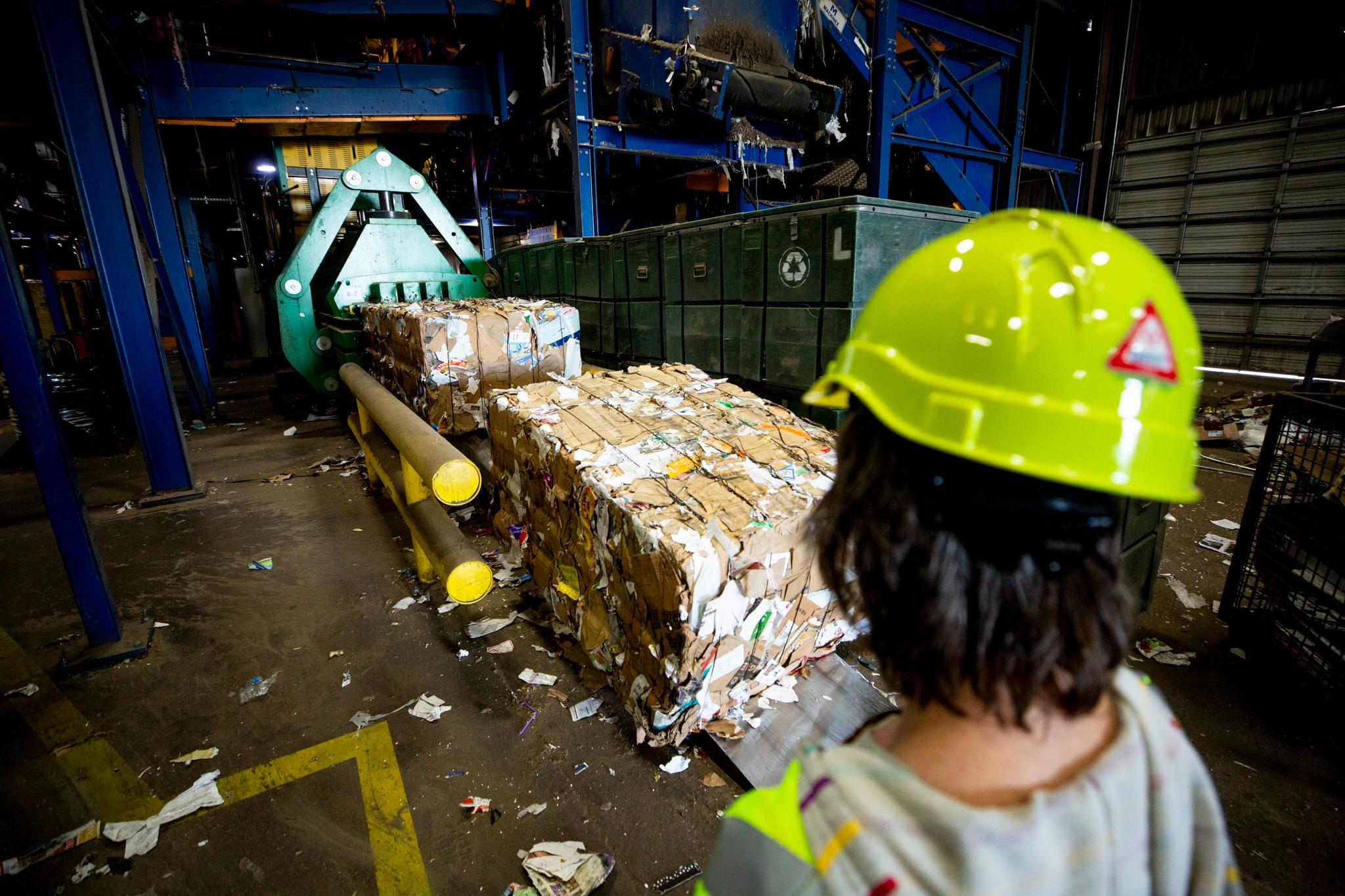The artist unfurled a length of paper, pulled a knife from his pocket, and sliced off a poster-sized sheet to clip to his easel.
Michael Dowling then took what looked like a boxer's stance, left foot in front of right. But he didn't throw a jab at the blank page. His left hand moved gently when he set to work with a stub of charcoal.
From where I was sitting on a folding chair outside Leon gallery's front window, I could see only the jagged edge of the paper and Dowling's occasional questioning glance my way. I only saw my portrait after he was finished.
For the past week, Dowling had been making art of and sometimes with people who signed up to sit for him at a social distance outside Leon. The gallery at 1112 East 17th Avenue is closed to the public because of the coronavirus outbreak. Dowling was taking part in a series of shows for passersby that began last month with an installation and performance art in the window by Jared David Paul Anderson.
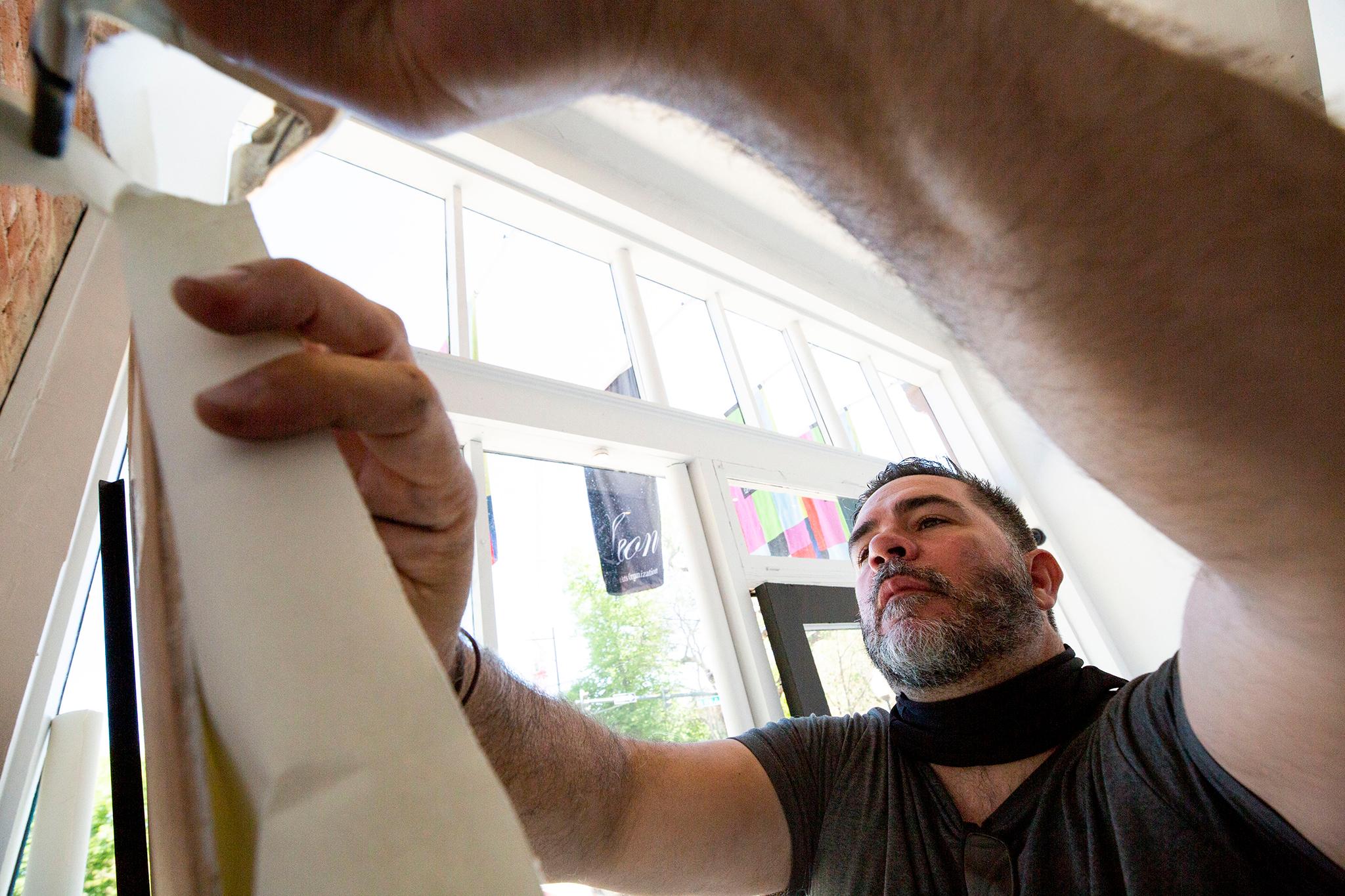

Leon artistic director Eric Dallimore said he's heard from friends who were driving by when they noticed Dowling's big, bold, black-and-white sketches piling up in the window.
"A person sitting at a traffic light, going about their business, they glance over and see a beautiful work of art," Dallimore said, adding that was what he had hoped the series he calls Please Stand By would bring to the City Park West neighborhood during the pandemic.
In recent weeks, I've been learning how coronavirus shutdowns, setbacks and uncertainties have changed Leon, a gallery and event space. In talks with Leon directors Dallimore and Eric Nord, who are artists, and with artists who have shown at and support the gallery, I'm starting to get a picture of the creative community's coping strategy. It might be summed up as: Don't let anything get in the way of the work.
In addition to his portraits at the window, Dowling has been working in the back to finish a commission that Dallimore had arranged with a client who wanted local art for tourist cabins being built in Estes Park. Dowling recently had to give up his own studio because the coronavirus impact on the economy has slowed his earnings.
Leon is "kind of my studio right now," Dowling said. "I'm psyched to be in here."
Dowling said when he decided to draw portraits for Please Stand By, "I just wanted it to be whatever it was going to be."
He's found that working on two or three portraits a day is a bit like being back in art school. The sketching requires repetitive motions he portrayed as meditative, a chance to work through ideas and techniques and "new ways of looking."
"I've learned a lot of interesting things through this process," Dowling said. "One of them is how fast I work."
The scent of Leon's old wooden floors, he said, reminds him of an old fortress turned winery where he spent time as a young art student in Tuscany.
"The last time, I realize, I produced as much work as I've been producing I was there," Dowling said.
His teachers in Tuscany were two South African-born artists, Rose Shakinovsky and Claire Gavronsky, who split their time between Cape Town, Johannesburg and Florence. I lived for seven years in South Africa, but was unfamiliar with Shakinovsky and Gavronsky. I learned from Dowling that they have collaborated with William Kentridge, perhaps South Africa's best-known contemporary artist and an accomplished charcoal draftsman himself. I've interviewed Kentridge. Small world.
I thought I'd feel self-conscious sitting for a portrait. Instead, I found myself meditating not on myself, but on the scene I was in. There was Dowling on the other side of the window in khaki shorts, gray T-shirt and flip flops, managing to look both relaxed and intent. A view of the street was reflected in the window.
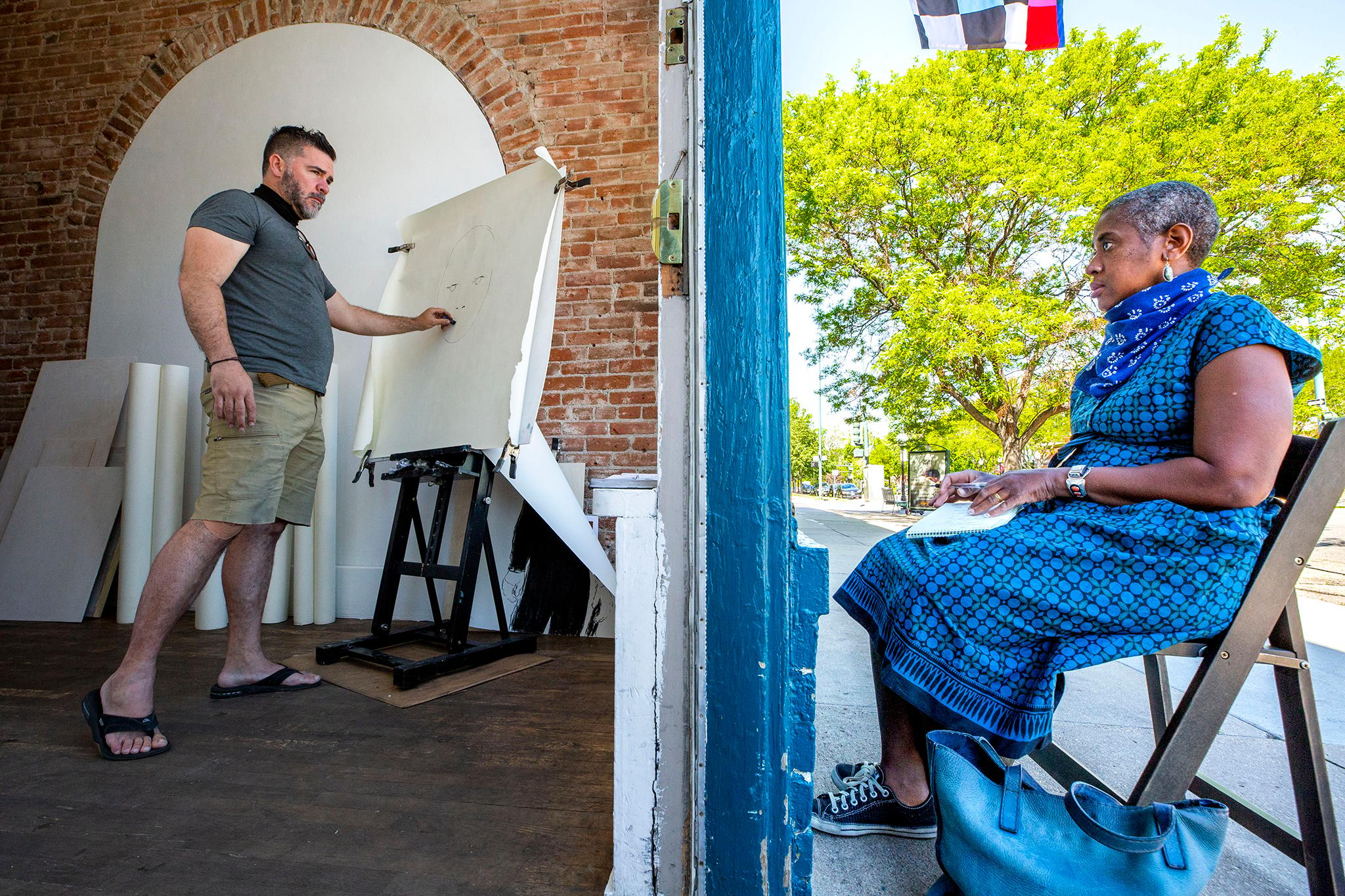
At one point, a bus pulled up behind me and opened its doors so I could eavesdrop on a recording of coronavirus-era instructions: "Facial coverings or masks are required on all RTD vehicles."
I was surprised at how much I could hear over the traffic noises, especially since I could not hear Dowling through the window. I had to rely on his hand gestures to let me know when he needed me to lift my chin or redirect my gaze.
Nord stopped by while I was sitting to let Dowling know that a crew would be in the gallery later to videotape a piece for a performance art series Leon has been streaming online. The series, in its third year, has in the past taken place before live audiences in the gallery.
Nord, who lives in an apartment nearby, said the neighborhood foot traffic in particular is quieter than before the stay-at-home orders, but has started to recover since Denver transitioned to safer-at-home.
Two women discussing their weekends and carrying cups of coffee from the cafe on the corner were among the pedestrians I saw. One of the women politely pulled up her mask when she spotted me. I don't think she needed to. We had plenty of room between us on the broad sidewalk. I was close enough to Leon to have rested my feet on the brick window sill, if I hadn't considered that too casual a pose.
Neither the women nor anyone else who passed stopped to ask what I and Dowling were doing. Perhaps talking to strangers is an art that has been put on hold during the pandemic.
I heard heavy construction equipment roar in the distance. A lawnmower roared back. The wind stirred a paper bag that was loose on the sidewalk, making a sound I imagined earlier portraits Dowling had drawn might have made when he unclipped them from his easel and let them float to the floor.
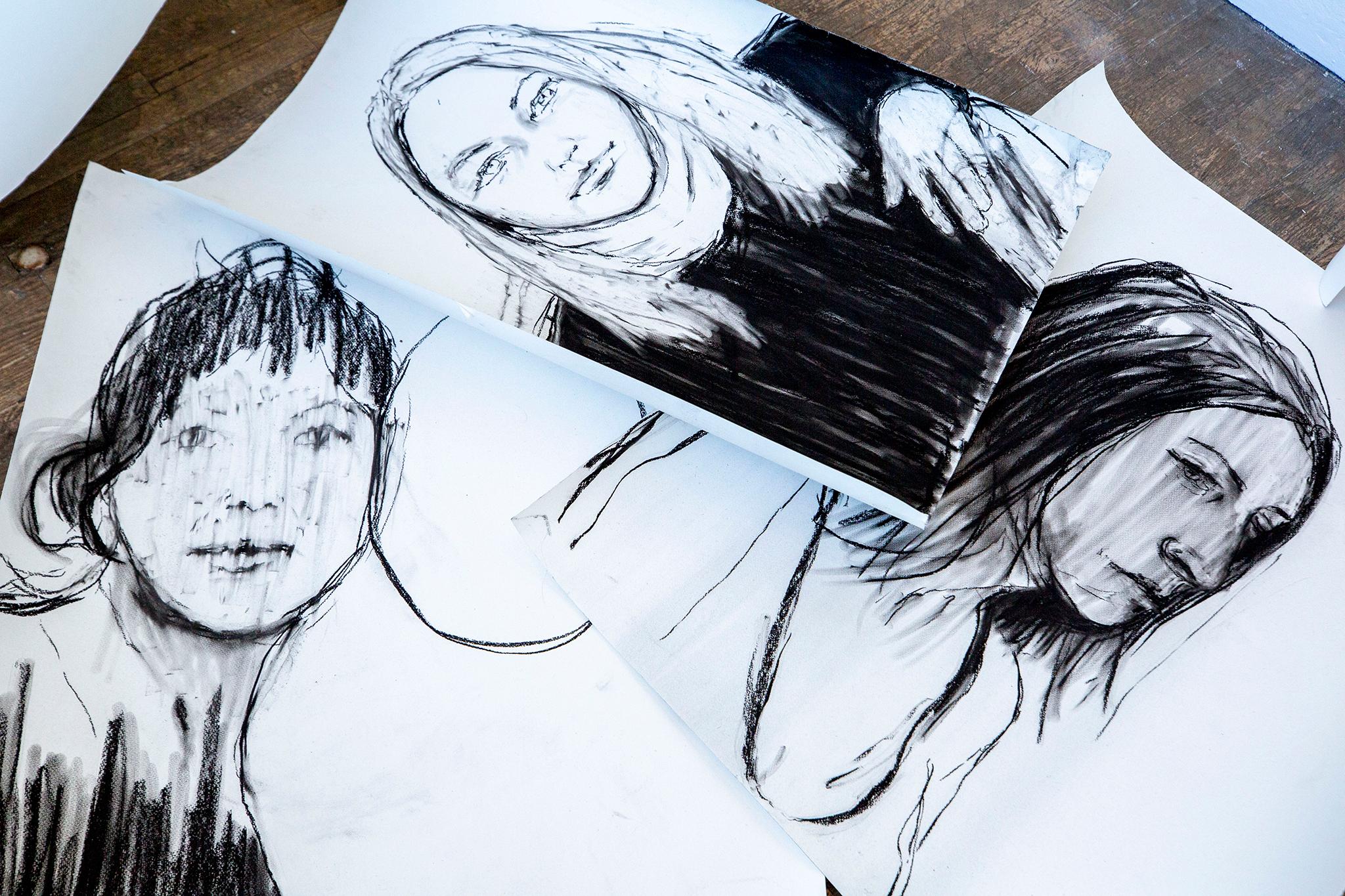
Most of Dowling's sitters have been people he knows who found out about his project on social media. The models have included painter Ashley Joon, who had prepared a canvass with her signature abstract floral motifs on which she asked Dowling to draw. Photographer Brett Fox used a camera to make Dowling's portrait while Dowling returned the favor in charcoal.
Artist Karen Kaiser came with a photograph of Dowling, who then searched for a photo of Kaiser on Facebook and used that to draw her portrait while she sat outside drawing his.
"Since she found a photo of me, I kind of followed her lead," Dowling said.
A writer, Elyssa Lewis, brought a notebook.
"She just sat there writing the whole time," Dowling said. "It really was a beautiful experience."
I just made a few notes. I must have had my head in my notebook when a squad of guys on rented scooters glided by. Dowling told me about them after he finished my portrait. So much for my powers of observation.
I looked at the portrait and saw my late mother's eyes, which says something about Dowling as a close observer.
The sitting took less than an hour. Dowling had taken my photo as we started and said he would use that later to touch up the portrait and "bring more detail into your nose."
That did make me self-conscious, but I resisted the urge to touch my face. The pandemic isn't over, after all.
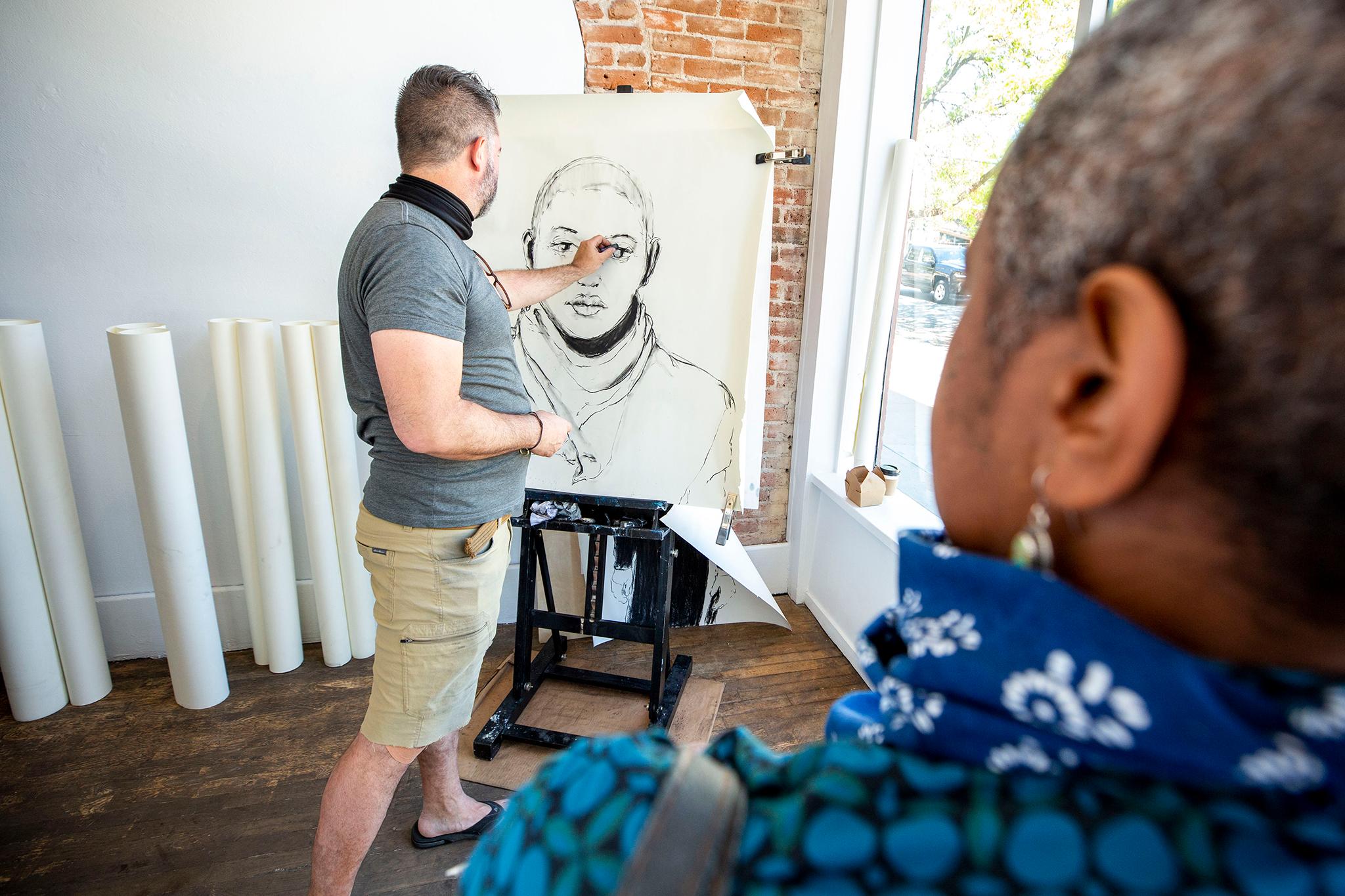
We'll be following Leon throughout the pandemic.






